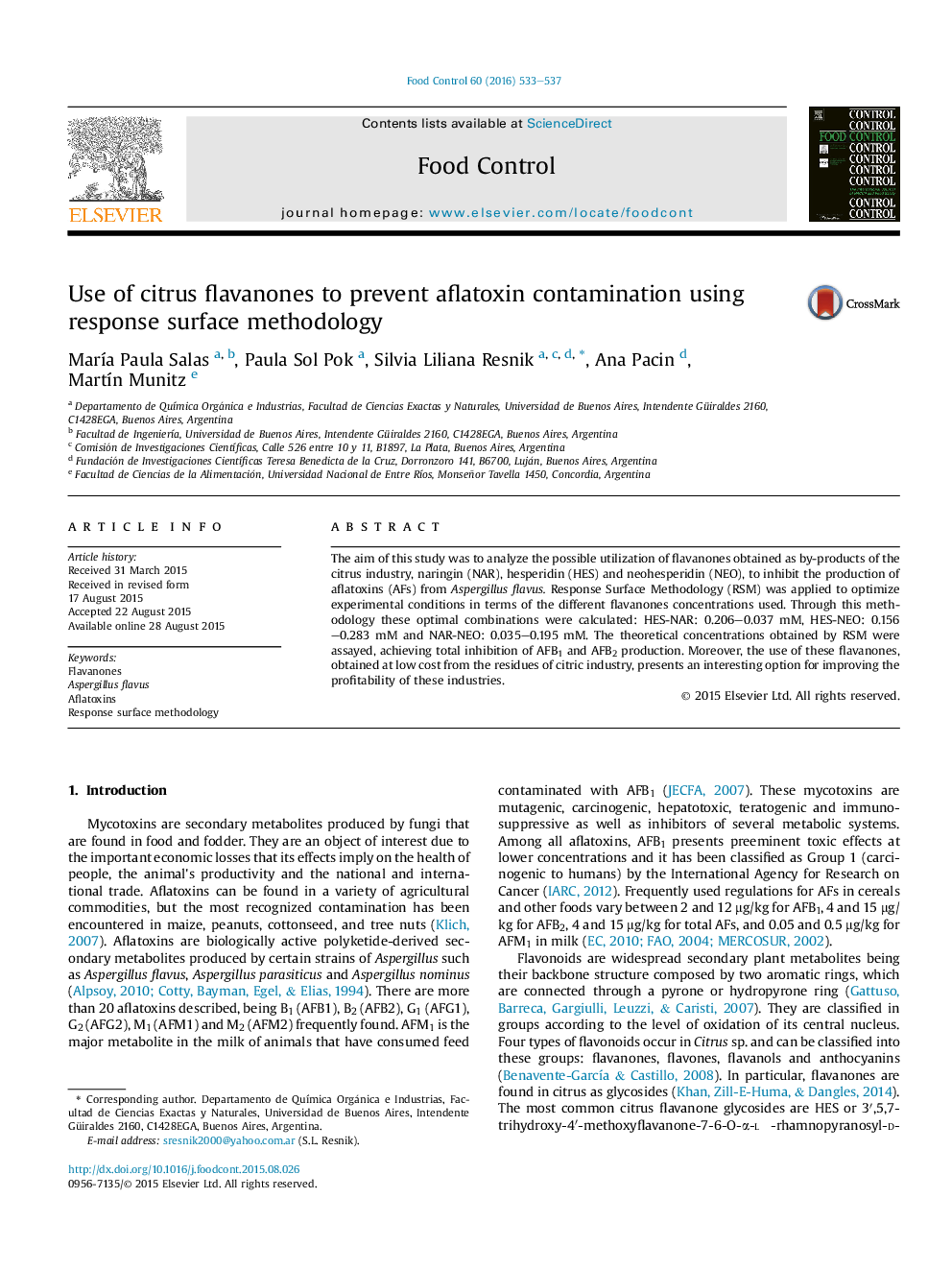| کد مقاله | کد نشریه | سال انتشار | مقاله انگلیسی | نسخه تمام متن |
|---|---|---|---|---|
| 6390339 | 1628402 | 2016 | 5 صفحه PDF | دانلود رایگان |
- None of the flavanones used alone could completely inhibit Aflatoxin B1 accumulation.
- The prediction model RSM allowed to obtain optimal mixtures to lower the concentration of flavanones.
- The flavanones used in combination at the optimal concentrations could inhibit 100% of Aflatoxin B1 and B2 accumulation.
The aim of this study was to analyze the possible utilization of flavanones obtained as by-products of the citrus industry, naringin (NAR), hesperidin (HES) and neohesperidin (NEO), to inhibit the production of aflatoxins (AFs) from Aspergillus flavus. Response Surface Methodology (RSM) was applied to optimize experimental conditions in terms of the different flavanones concentrations used. Through this methodology these optimal combinations were calculated: HES-NAR: 0.206-0.037Â mM, HES-NEO: 0.156-0.283Â mM and NAR-NEO: 0.035-0.195Â mM. The theoretical concentrations obtained by RSM were assayed, achieving total inhibition of AFB1 and AFB2 production. Moreover, the use of these flavanones, obtained at low cost from the residues of citric industry, presents an interesting option for improving the profitability of these industries.
Journal: Food Control - Volume 60, February 2016, Pages 533-537
